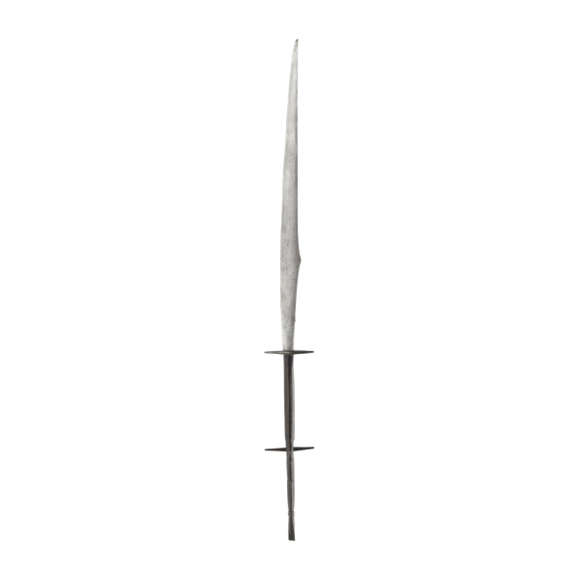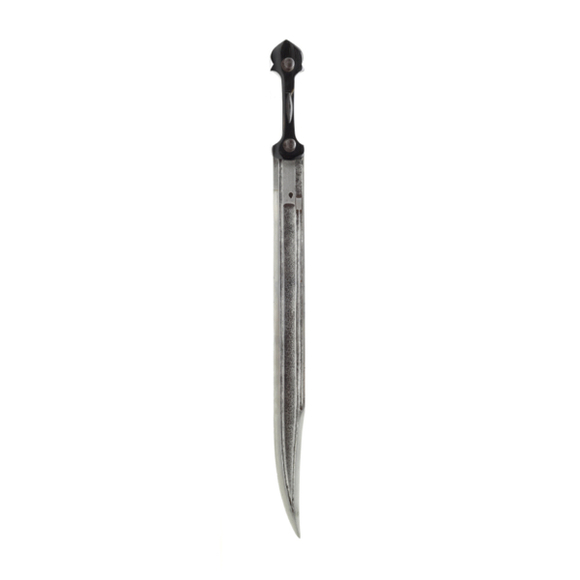This peculiar sword was used by the Garo people of Assam for fighting, clearing the jungle, and animal…

59 cm / 23.2 inch
43.5 cm / 17.1 inch
forte 9 mm
middle 8 mm
near tip 5 mm
forte 37 mm
middle 37 mm
near tip 37 mm
693 grams
15 cm from guard
Kingdom of Sikkim
Iron, steel, hardwood, silver, turquoise
19th century
Introduction
The Kingdom of Sikkim (1642-1975) was a monarchy in the Eastern Himalayas. It became a princely state of India in 1890. Its population consisted of Lepchas (Indigenous Sikkimese) and Bhutia (Sikkimese of Tibetan ancestry). Their national sword was called ban by the Lepchas and chipsa by the Bhutia. It was an all-purpose tool, reportedly used as:
"plough, toothpick, table-knife, hatchet, hammer, and sword.".1
-Sir Joseph Dalton Hooker
Hooker was a botanist, adventurer, and close friend of Charles Darwin.
He traveled through the Himalayas and India between 1847–1851.
When you hold one in your hand, you can immediately understand how it did all of the above. They are heavy but well balanced for cut and chop, and the thick spine may well work as a hammer. They were said to be worn on the left hip (native style), on the right hip (Bhutanese style) or diagonally in the front (Tibetan style), showing the cultures the Lepcha took influence from.

Sikkim Lepcha and their ban swords
Description
A rather nice example of a Sikkim ban sword. These swords are often fairly well-made but tend to be simple in their execution. This is an exception and was probably once owned by somebody relatively important.
Its thick blade of wedge-shaped cross-section has flat sides without grooves as to show off its interesting steel construction. The blade is made with fine hairpin forging, somewhat akin to Tibetan and Bhutanese work but with much finer lines. The blade also shows prominent effects of differential heat treatment, creating a darker, hardened area near the edge that runs all the way to the very tip. It starts a few cm up the blade, a common feature also on some of the earliest Chinese steel swords.
The start of this hardened area has a vague white line that goes up. Among Japanese sword collectors this is known as mizukage (水影), literally "water shadow" and demarcates the place until where the cooling was fast enough to create martensite crystals in the steel.
It comes with the typical Sikkimese hardwood scabbard that is open on one side, retaining the sword with two metal bands. The metal bands and a decorative plate at the bottom of the piece are all decorated with fine filigree, and hold turquoise stones. Once 9 in total, 4 now lost.The hardwood handle is wrapped with silver wire, forming five separate bands. The octagonal cross-section of the pommel shows a clear kinship with Bhutanese work. There is a repair to one of the quillons of the wooden handle, it's well-done and hardly discernible.
Notes
1. Heath, Ian; "Armies of the Nineteenth Century: Asia: Central Asia and the Himalayan Kingdoms", Foundry Books, Guernsey, 1998. Page 148.



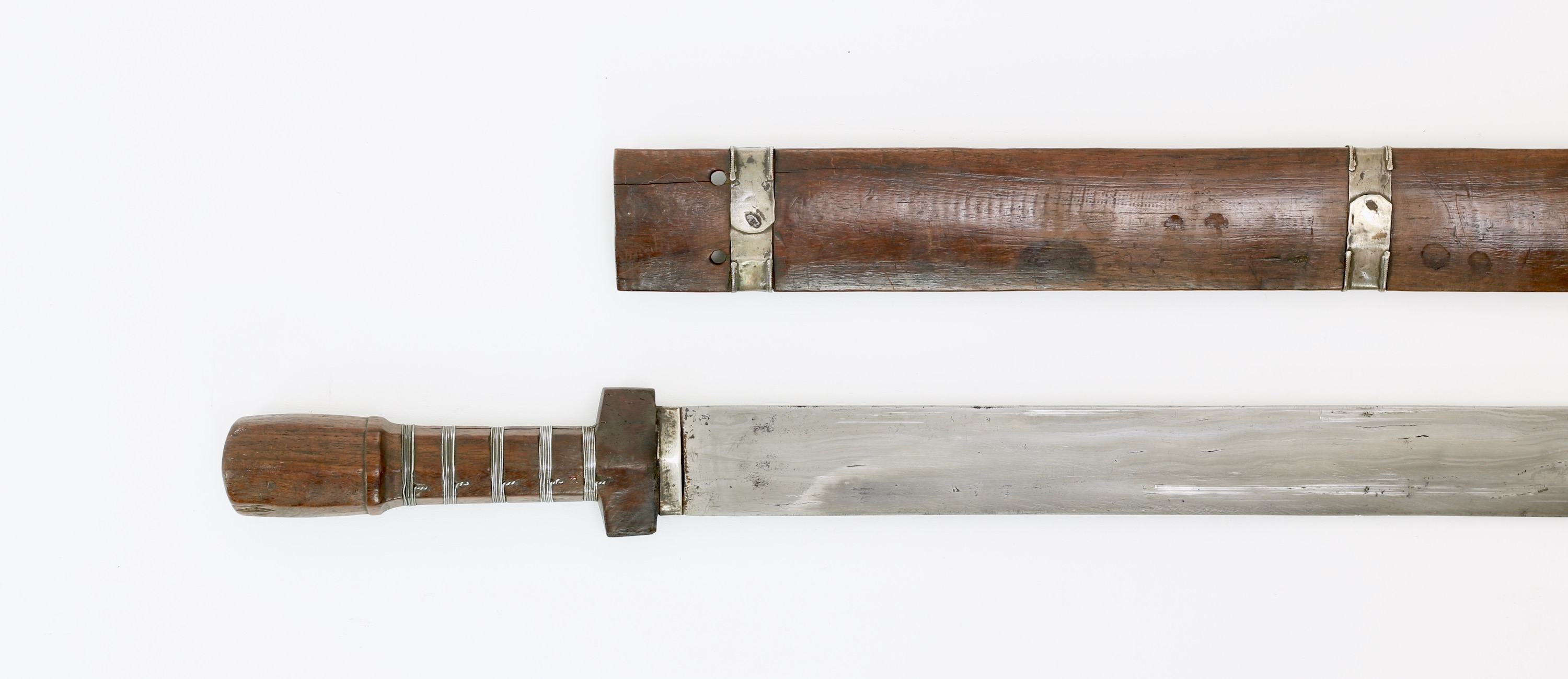


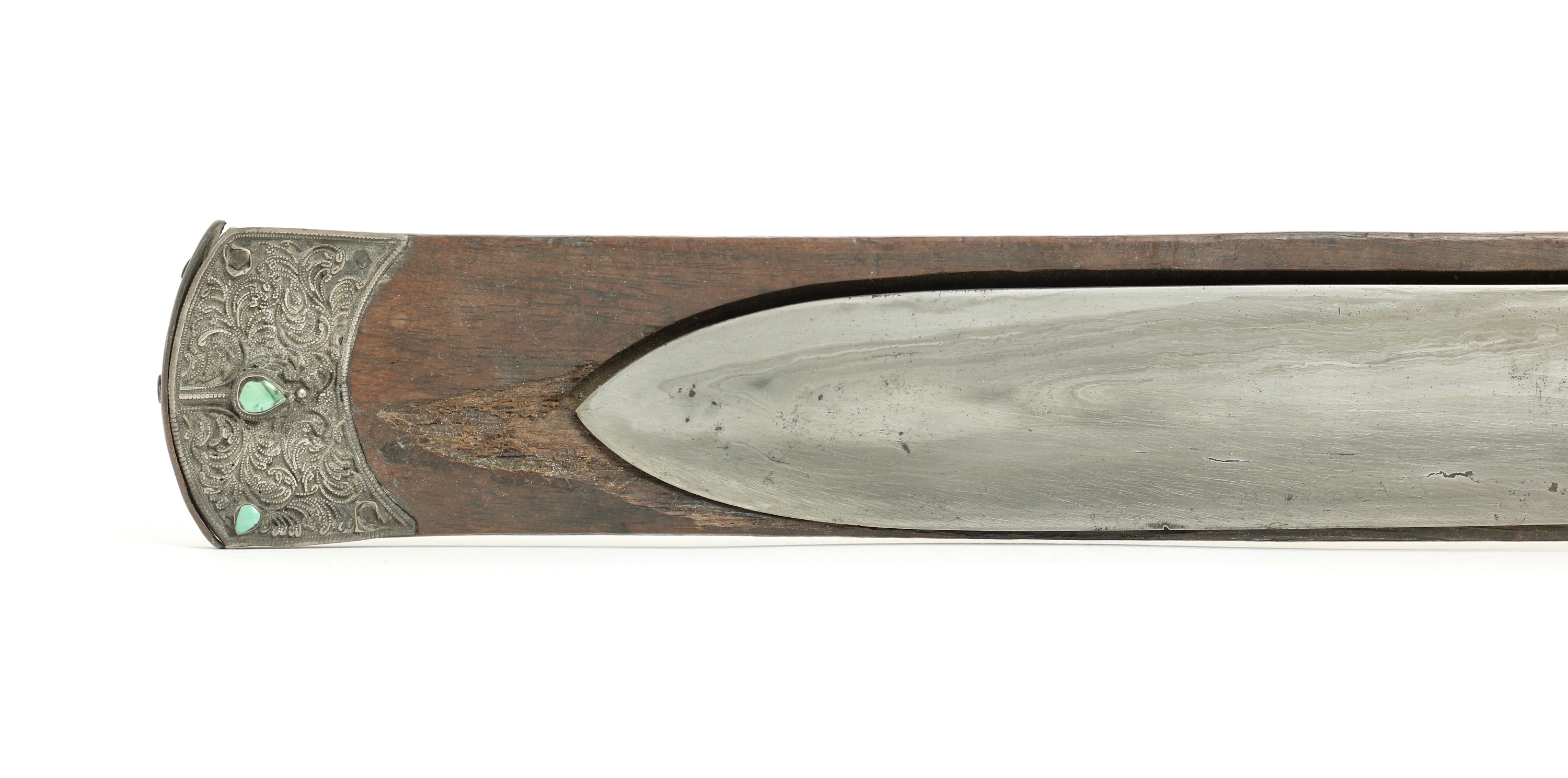
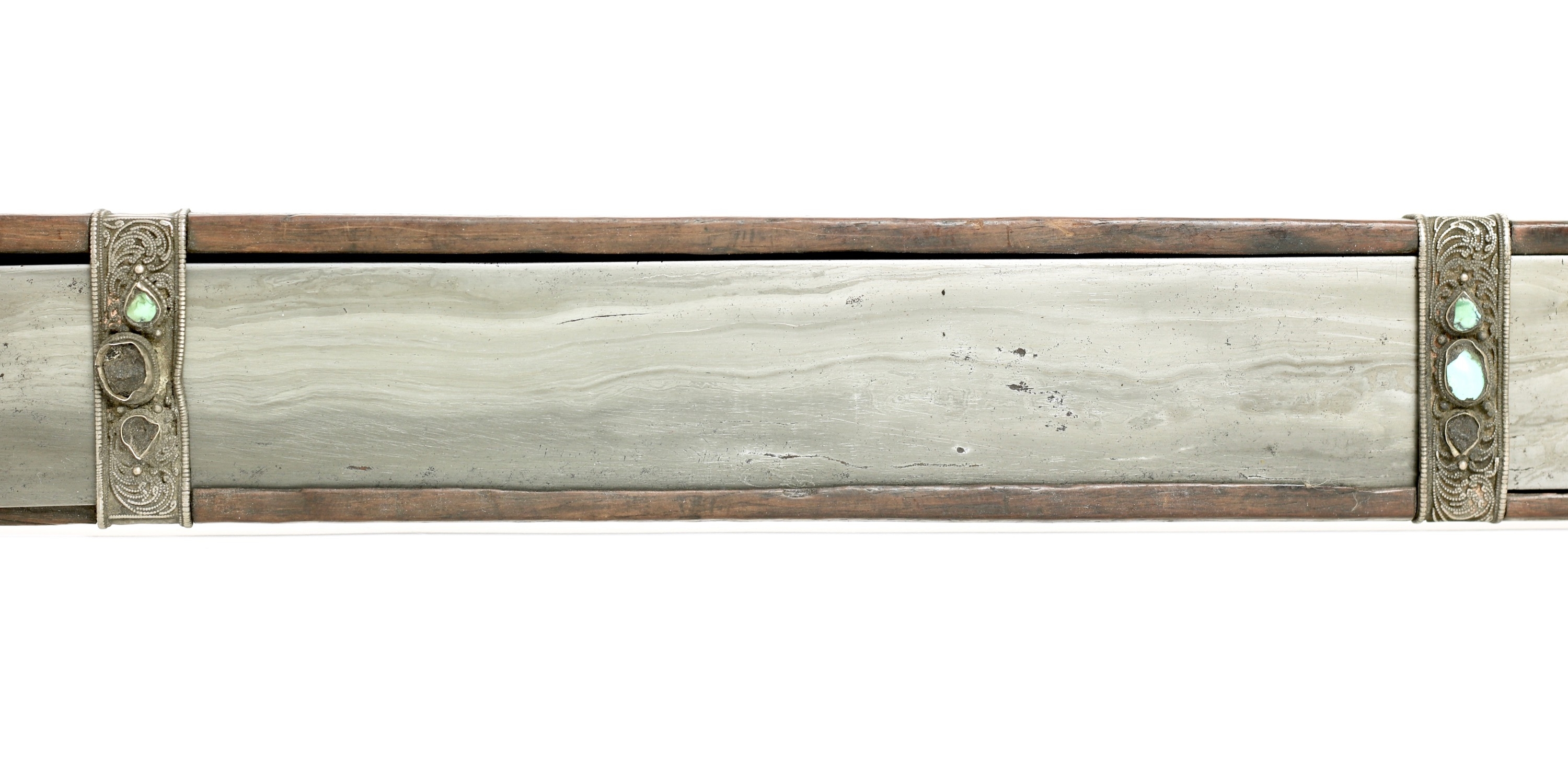







These mysterious weapons were already obsolete when the first ethnographers encountered them.
An early fighting piece with strong reinforcing langet and broad, cobra shaped tip.




